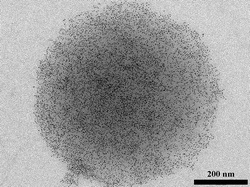Abstract
In this work,

- This article is part of the themed collection: Emerging investigators
* Corresponding authors
a Institute of Physical Chemistry, University of Hamburg, Grindelalle 117, Hamburg, Germany
b Center for Applied Nanotechnology, Grindealallee 117, Hamburg, Germany
c Faculty of Technology and Metallurgy, University of Belgrade, Karnegijeva 4, Belgrade
d Facultad de Ciencias Químicas, Universidad Complutense de Madrid, Avda. Complutense s/n, Madrid, Spain
e Instituto de Catálisis y Petroleoquímica, CSIC, Campus de Cantoblanco, Madrid, Spain
f
IMDEA Nanoscience, Fco. Tomás y Valiente 7, Campus de Cantoblanco, Madrid, Spain
E-mail:
beatriz.hernandez@imdea.org
Fax: +34 91 497 68 55
Tel: +34 91 497 68 41
In this work,

 Please wait while we load your content...
Something went wrong. Try again?
Please wait while we load your content...
Something went wrong. Try again?
A. Salcher, M. S. Nikolic, S. Casado, M. Vélez, H. Weller and B. H. Juárez, J. Mater. Chem., 2010, 20, 1367 DOI: 10.1039/B917022G
To request permission to reproduce material from this article, please go to the Copyright Clearance Center request page.
If you are an author contributing to an RSC publication, you do not need to request permission provided correct acknowledgement is given.
If you are the author of this article, you do not need to request permission to reproduce figures and diagrams provided correct acknowledgement is given. If you want to reproduce the whole article in a third-party publication (excluding your thesis/dissertation for which permission is not required) please go to the Copyright Clearance Center request page.
Read more about how to correctly acknowledge RSC content.
 Fetching data from CrossRef.
Fetching data from CrossRef.
This may take some time to load.
Loading related content
